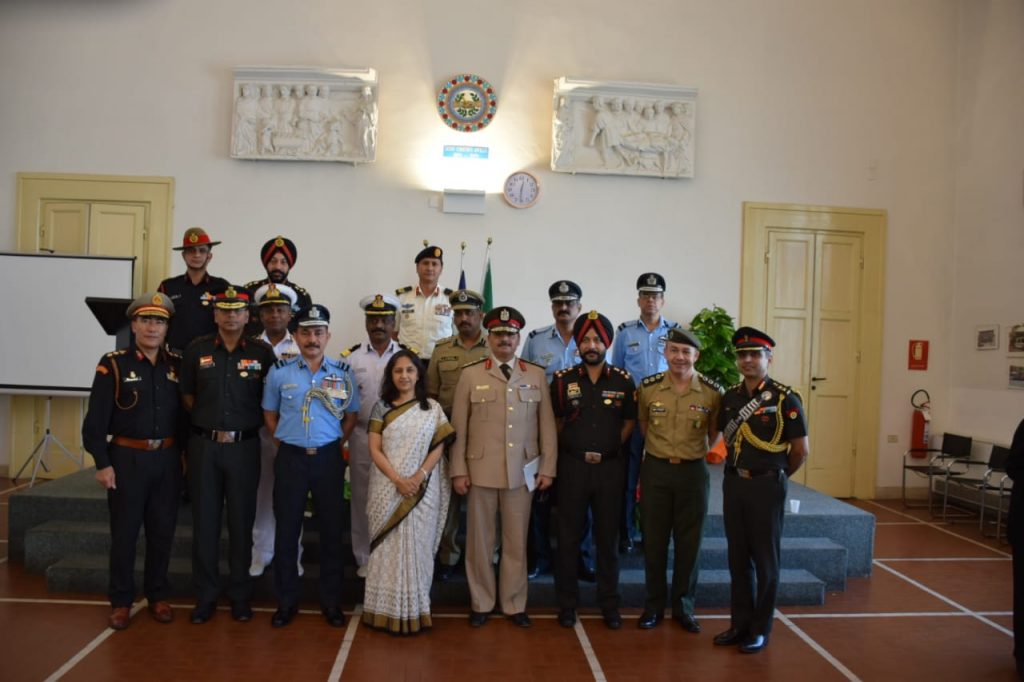A indian Defence Attaché (DA) acts as the military face of their nation’s armed forces in foreign embassies bridging diplomatic missions and strategic defense cooperation. India has significantly ramped up this specialist corps, reflecting its ambition to expand defense diplomacy. Here’s a comprehensive look at the Indian Defence Attaché – their responsibilities, recent developments, and why their role matters now more than ever.

What is a Defence Attache?
A indain Defence Attache or military attache is a commissioned military officer assigned to Indian embassies abroad. Their roots lie in the 17th-century European military diplomacy tradition. Over time, the role evolved and was formalized under the Vienna Convention in 1961, granting military attachés full diplomatic immunity .
Indian DAs are among three service representations Army, Navy, and Air Force—tasked with strengthening bilateral military relations, monitoring local defense developments, and facilitating cooperation in strategy and technology .
Key Responsibilities
- Military Diplomacy & Engagement
- Foster ties between Indian and host country defense establishments.
- Organize joint training exercises, staff talks, and officer exchanges .
- Intelligence & Situational Awareness
- Monitor deployments, capability developments, and doctrinal updates in the host nation.
- Provide real-time insights on defense trends and potential threats .
- Promoting Defence Trade & Collaborations
- Facilitate Indian defense exports and technology transfers—linking manufacturers (e.g., BrahMos, Pinaka) with buyers .
- Aid in negotiating contracts and supporting defense-inclusive diplomacy.
- Crisis Management & Liaison
- Serve as key contacts during emergencies, like peacekeeping responses or evacuation needs.
- Ensure smooth defense-related coordination alongside Ministry of External Affairs (MEA) and Indian High Commissions.
Recent Expansion of India’s Defence Attaches
Scale-Up Since 2024
India has actively increased its DA missions—sending 16 officers across all three services to new diplomatic postings . These include:
- Africa: First-time appointments to Ethiopia, Ivory Coast, Mozambique, Djibouti, Tanzania, and Algeria.
- Asia & Europe: New positions in Armenia, Philippines, Poland, alongside reallocations in Moscow, London, and the Philippines .
This expansion underlines India’s strategic grasp of defense diplomacy—enhancing military partnerships in geopolitically critical regions like African Sea lanes and the Indo-Pacific theatre .
Drivers of Expansion
- Response to China’s Global Influence
- Parallel India’s rise in Global South, Africa; maintain strategic balance .
- Promotion of Defence Exports
- India pushing homegrown platforms BrahMos, Pinaka, anti-drone systems, naval hardware for export, facilitated by in-country DAs .
- Strategic Diplomacy
- Strengthening Indo-Pacific and Eurasian ties via professional defense liaisons aligns with India’s rising geopolitical ambitions .
Significance of Recent Attache Deployments
Africa & Maritime Strategy
Countries like Mozambique and Djibouti are strategically located along pivotal trade routes. DAs in these regions support India’s maritime cooperation, anti-piracy missions, and naval logistics increasing presence in the Red Sea–Indian Ocean corridor .
Southeast Asia & Indo-Pacific
The Philippines deal for BrahMos missile units highlights defense cooperation in maritime security. A DA there helps nurture bilateral trust and supports expanding strategic ties amid regional instability Europe & Tech Collaborations
In Poland and Armenia, Indian defence attaches work on joint R&D and defense industrial cooperation. This includes coordination for equipment such as multi-barrel rocket launchers (Pinaka) and aerospace platforms .
Professional Tips & Challenges
Training & Integration
Though India has historically relied on one-off assignments, there is growing recognition for formal training. Experts suggest:
- Enhanced language and diplomatic training.
- Cross-posting in MEA to boost diplomatic competencies.
- Yearly reviews to align DA goals with Indian security priorities .
Coordination Challenges
DAs juggle reporting to both their service branches (Intelligence Directorates, DG DIA) and diplomatic missions. While their independence ensures operational effectiveness, it can also create reporting complexities .
Also Read : Why Tiger Raja Singh Resigned from BJP: Key Reasons, Context & Aftermath
The Indian Defence Attache in Action: Case Study of Op Sindoor
In May – June 2025, during India’s “Operation Sindoor” against terror infrastructure in Pakistan, the Indian Defence Attaché to Indonesia, Capt. Shiv Kumar (Navy), broke new ground in transparency:
- He revealed that initial strikes resulted in some losses attributed to civilian directives limiting attacks on military assets .
- The embassy clarified his remarks were contextual highlighting respect for civilian-military hierarchy and India’s non-escalatory posture
- His candid briefing underscored how DAs can communicate military-political interplays, reinforcing democratic accountability.
This episode underscores how Indian DAs not only enable defense diplomacy but also serve as credible voice of Indian military strategy in global forums.
Future Outlook
| Trend | Implication |
|---|---|
| More DA Slots | Expect expansion beyond current regions, e.g., ASEAN, Gulf nations. |
| Cadre System | Governments may nurture a specialized DA cadre for continuity and expertise. |
| Tech-led Diplomacy | With rising defense tech cooperation, DAs must master cybersecurity, AI, and space assets |
Conclusion
The role of the Indian Defence Attache is evolving from traditional liaison to dynamic defense diplomacy balancing military engagement, intelligence sharing, export promotion, and strategic messaging. India’s recent deployment surge is a calculated move to expand its global footprint and enhance strategic influence. With reform in training and structure, India’s DA framework is poised to be a powerful force multiplier in its emergence as a global strategic player.
enhancing India’s strategic influence, defense exports, and bilateral military partnerships globally.
